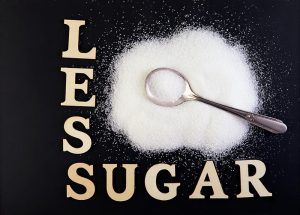In bodybuilding circles, you’ve undoubtedly heard about bulking and cutting. For the veteran lifters, wondering when to cut or if to cut or bulk first is pretty easy.
But when you’re a newbie to lifting, asking yourself ‘should I bulk or cut?’ is an incredibly common question.
Knowing when to cut and when to bulk is important for hitting your body goals. So let’s take a closer look at whether to cut or bulk first – and the pros for each.
Bulking and cutting
You know what you’re aiming for and now it’s just knowing how to achieve it. When you’re just starting out, it can be confusing knowing when to cut, or if to cut at all.
Firstly, you need to get to grips with whether your aim is to gain muscle or burn fat. So let’s dig a little deeper into when to bulk and when to cut.
Should I bulk? (and when to)

If you’re pretty new to bodybuilding, the likelihood is that you’re not packed with muscle just yet. This is where bulking comes in.
When you’re just starting out, bulking is important to gain a lot of muscle and strength, through a combination of diet and training. To put things into perspective, if your body fat percentage is beyond around 15 to 20%, you may need to cut first in order to see progress.
However, it isn’t just about cutting excess fat, but completing workouts with proper form. Since your muscles will be given quite a shock at the introduction of intense strength training, proper form is everything to see results.
But what is ‘proper form’?
Proper form during strength training is defined as a full range of motion, with slow, controlled reps and that feeling of really working your muscles. No swinging or momentum motions towards your body in order to lift.
Also Read: The Ultimate Bodyweight Workout
Adding weight and reps to your workout will help you quickly move up in your lifting ability. For example, starting light on the bench press with five sets of five reps is a great starting point, adding five pounds the next time. In the second scenario, aim to bench press for as long as you can.
As this weight becomes more difficult, you’ll have built up the strength to lift a weight 5×5 you wouldn’t have imagined lifting at the beginning.
‘Should I bulk?’ Yes, if you’re ready to lift heavy and eat well. Consistently adding weight and reps to your workout will not only build strength, but increase muscle gains. While high reps have their place in a hypertrophy program, kicking off your bulk with heavy compound lifts is essential.
Try to incorporate these movements into your workout: Deadlifts, bent over row, overhead press, bench press and back squat. These compound lifts are key to getting the most out of your bulking gains.
However, your diet is just as important for muscle growth and to fuel your exercise. Bulking up isn’t all about getting heavy in the gym, but paying attention to what you eat. Those asking ‘should I bulk?’ are most likely going to consider two routes next:
Dirty bulk
To many, a dirty bulk sounds like a dream come true, since you can pretty much whatever you like. Take a look at our dirty bulking guide to find how a dirty bulk really works.
Working in a calorie surplus with high-sugar and high-fat foods, however, won’t do your body much good in the long run. Plus, while you may be fuelling your heavy weight workouts, if you’re looking to minimize fat gain, this route could make your cut even harder.
Clean bulk
Pretty much the opposite of a “dirty bulk”, a clean bulk focuses on high-quality foods, such as lean meat, fruit, vegetables and whole foods. This means zero (or very little) processed foods, such as candy, cookies, pizza or processed meats.
A clean bulk gives your body the calorie surplus it requires in order to gain weight during a bulk, without the health risks and higher potential fat gain.
When to cut?

Wondering when to cut is far easier to grasp after knowing how bulking works and when to bulk up. Thankfully, the two aren’t miles apart.
In terms of when should I cut, the answer may be one of two:
- You’ve either gone through a bulk, gained muscle and gained a little too much fat along the way. Or, since gaining muscle, you want to see further muscle definition at a lower body fat percentage.
- You’re at the start of your lifting journey and need to lose a decent amount of fat first.
During a bulk, it’s not unusual to have a daily surplus of calories anywhere between 200 and 1000 calories. During this bulk cycle, some fat gain is natural, but if you’ve been following a dirty bulk you will have no doubt gained much more.
So, how do you cut? Do the opposite. During a bulk, you’ll be eating far more calories than your usual daily intake. So in order to lose the excess fat you’ve gained, you’ll need to be in a calorie deficit.
Unless you’re at the start of your fitness journey and looking to lose a lot of weight, if you’re cutting after a bulk your goal would be to lose around 0.5 to 1 pound a week.
Also Read: Beginner Steroid Cycle Guide
In order to start eating in a deficit (or surplus during bulking), you’d need to know your daily calorie needs. You can also calculate your body fat percentage in order to determine your fat loss goals.
During a bulk, it’s important to calculate your macros to ensure you’re getting enough fat, carbs and protein in order to sustain muscle growth. This is still important during a cut, as you could be depriving your body of crucial nutrition when suddenly dropping your calorie intake.
If you drop your calorie intake and notice very little weightloss, it could be time to revisit the number of calories you’re consuming – or add cardio into your workouts. The same goes for bulking. If you’re gaining weight too fast, or gaining too much fat, you’ll need to review your calorie intake.
In terms of your workouts, they can pretty much stay the same as long as you are keeping good form. During a cut, you can continue to lose fat and gain strength through a combination of training and a healthy diet.
Should I cut?

When to cut and when to bulk is entirely up to you, since we all start weight lifting at different ability levels.
Since muscle weighs more than fat, if there was a set rule of when to cut, it may not apply to someone who weighs more due to their muscle mass. However, knowing when to cut can be determined by your body fat percentage.
If you’re starting with a high body fat percentage, this would be a good indication as to whether you should cut or bulk first. The same goes for fat gain during a bulk. If you were to follow a dirty bulk, for example, you would be more likely to gain unwanted excess fat.
Since a dirty bulk can bring with it both muscle gains and fat gains, once you’ve reached a certain level after a bulk it could be time to cut.
When to cut and when to bulk
It’s not uncommon to ask: ‘should I bulk or cut first?’ sinc the ‘cut or bulk first’ argument has long been debated in gyms across the world.
The answer is, it totally depends. If you’re starting off at the heavier end of the scales with a higher body fat percentage, you’re likely going to need to cut first.
If you’re no newbie to lifting weights and bulking up, you’ll know when it’s time to get cutting! As a beginner, it’s totally understandable to be uncertain whether to cut or bulk first.
Also Read: How to cut and keep your muscle
We’d recommend taking your current weight, calorie intake and body fat percentage into account to determine when to bulk and when to cut. Whether you decide to cut or bulk first, you’ll need to ensure you’re getting enough protein (and other crucial nutrients) into your diet.
Conclusion
Now you know the basics, you’ll be well equipped to decide whether to cut or bulk first, according to your weight goals.
Here are some key points to remember:
- If you’re below 15 to 20% body fat, you may want to bulk first (and above 15 to 20% start cutting first)
- Ensure your training consists of good form, lifting heavy when possible
- Work out your macros for bulking to ensure you’re getting enough calories/nutrients in your diet
- Keep track of what you’re eating, either way (whether you cut or bulk first)
- Your training shouldn’t differ drastically between cutting and bulking
- While a clean bulk is a healthier approach to bulking, don’t be too strict with yourself or you may be tempted to indulge more often
Whenever you’re ready…

Whether you choose to cut or bulk first, Brutal Force can support your bodyweight goals.
Our bulking and cutting stacks help you add muscle like never before, cut through fat and build strength – FAST.
Our hardcore stacks give serious results, with zero injections and 100% safe and natural ingredients, for ultimate gains.
















